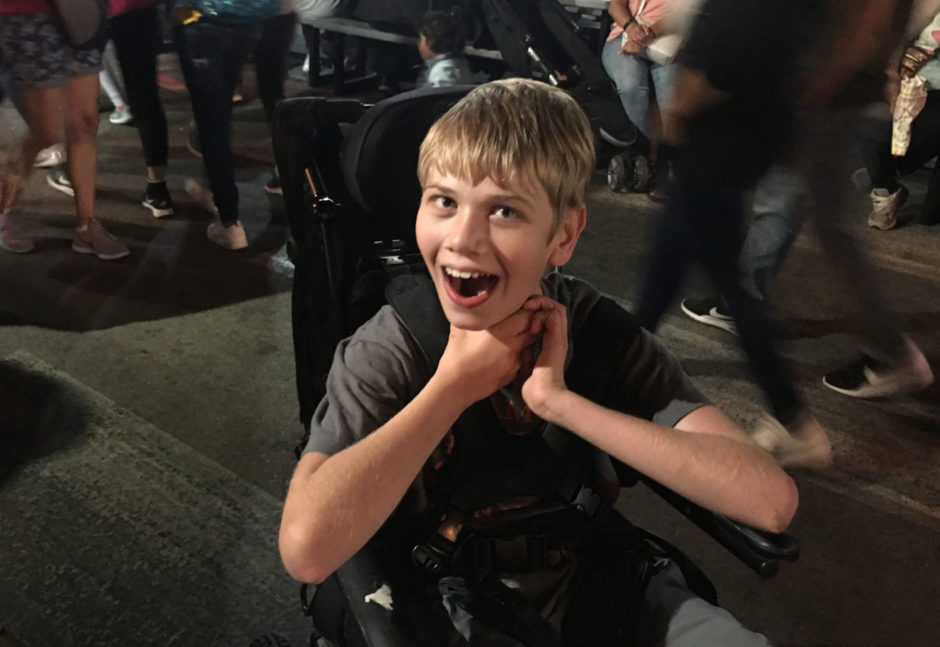May 31, 2020
Keith McArthur can remember the moment he and his wife, Laura Williams, began to realize their newborn son might not be like other babies.
It was the fall of 2006, and like so many parents, the Toronto couple was at a Sears Portrait Studio to document a new stage in their lives. The hope was to have some photos of baby Bryson and his three-year-old brother, Connor, to frame as Christmas gifts for the grandparents.
The photographer tried to take that classic shot where the baby's head is propped up on his tiny fists. Only it didn’t work for two-month-old Bryson. The photographer, with the help of Bryson’s parents, attempted the pose again and again but the boy's head just kept falling to the side. In the end, the photographer gave up and moved on to the next pose.
Over the next couple of weeks, it became clear that something about Bryson was, in fact, different. McArthur and Williams had revelled in the way Connor had hit developmental milestones on time or ahead of schedule. By contrast, Bryson wasn’t reaching them at all.
"All babies have floppy heads but his was floppier," said McArthur. "His limbs were floppy, too. And his eyes didn’t track objects the way the baby books said they should by this age."
After Bryson’s three-month checkup, doctors said he had hypotonia — the medical term for kids with loose, floppy muscles. But as he progressed through infancy, medical tests made it clear that it was more complicated than that. Bryson's diagnosis was later changed to global developmental delay, which meant it wasn’t just his body that was falling behind — it was also his brain.
In fact, the pediatricians and other specialists Bryson saw didn’t know the underlying condition behind his low muscle tone and missed milestones, such as rolling over and sitting unassisted.
"He can't walk or talk or dress himself or feed himself or use the bathroom by himself."
Despite seeking the expertise of countless doctors and specialists, McArthur and Williams wouldn't know for years. From that day at the Sears Portrait Studio, it would be nearly a decade before Bryson's parents would learn he has a rare genetic condition called GRIN1-related neurodevelopmental disorder. It’s caused by a mutation in the GRIN1 gene, which helps produce a protein that plays a critical role in how the brain learns, grows and develops.
Today, Bryson is 13, and according to his father, a warm and loving son. But he functions at the level of a 12-month-old.
"He can't walk or talk or dress himself or feed himself or use the washroom by himself," said McArthur. Bryson also experiences violent, seizure-like episodes.
McArthur and Williams's search for an elusive diagnosis and then for treatments has reshaped their lives. Both of them have had to put their careers on hold at times. Two years ago, McArthur, a former journalist, set his writing aside to focus exclusively on the hunt for a cure.
Their focus has been not just on accommodating Bryson’s needs but also understanding the nature of his condition. Any parent will advocate for a child with a rare disease, but GRIN1 has no playbook. So McArthur and Wiliams have had to write that playbook. Their odyssey has made them detectives of a sort, as well as fundraisers and scientific research partners.
Finding the answers to Bryson’s medical mystery could have implications for the approximately 1,000 people worldwide known to have GRIN disorder. But would learning more about Bryson's condition bring them any closer to knowing what’s going on in his mind?
- Listen to the CBC podcast Unlocking Bryson’s Brain
II.
Bryson has big, bright blue-green eyes under a fringe of blond hair. He’s very slight but he has a wide smile that draws people in.
"His smile envelops you with genuine warmth," said McArthur. "His hugs are the purest form of love."
WATCH | Bryson smiles for the camera:
Indeed, Bryson is charmingly smiley with others, quick to laugh and loves watching the Toronto Blue Jays with his dad. During the coronavirus lockdown, he and his brother, Connor, a self-described "musical theatre nerd," have been binge-watching the TV series Glee.
Bryson also enjoys the company of his classmates at Sunny View Public School, a school in North Toronto that caters to kids with physical and cognitive disabilities.
"He loves it there, and seems to get annoyed on weekends when he has to spend time with us instead of getting on the school bus to go see his friends," said McArthur.
Bryson seems to understand conversations around him and the questions his family ask of him, even if he can't really answer in words.
"He lets us know his preferences by reaching forward with both hands and choosing — say, between pudding or applesauce — or putting his hands in front of his mouth if he doesn't want to eat at all," said McArthur.
Given his physical limitations, Bryson has specialized equipment. Getting Bryson in the family’s accessible van, into his collapsible wheelchair and then navigating public spaces can be exhausting for the family.
"I know how to love him and I know how to put my needs aside and try and help him."
Connor, who is now 16, has learned to roll with having a sibling who requires a lot of care. He admits it would be nice if the family could more easily go to restaurants or travel, but insists "it’s not that big of a deal to me."
"I know how to love him and I know how to put my needs aside and try and help him," Connor said. He said he never had an expectation that Bryson would be able to interact with him in the usual way. "I grew up knowing him as someone who couldn’t walk or talk or tell us what he wants."
But McArthur and Williams want to understand far more about Bryson’s preferences, what he’s thinking and, most importantly, what he needs.
Although he’s made some important developmental strides, Bryson still needs 24/7 supervision and support. "He has mood swings that turn into seizure-like episodes where he bites himself so violently [on the wrist] we're worried he'll tear an artery," said McArthur.
Bryson's parents hired a caregiver, Edna, who looks after him after school each day. They also transformed the family living room into a safe space, covering the floors and walls with gymnastic mats and pool noodles.
"But he still gets hurt," said McArthur.
WATCH | McArthur comforts his son after a seizure-like episode:
McArthur said that in the first year of Bryson’s life, he held onto the belief that while Bryson was missing milestones, he’d eventually catch up — that he would learn to walk and talk and that "we'd get our perfect family back again."
Bryson's mom was less inclined to believe that. Williams was at home with her two boys at the time, having put her job as a social worker on hold after Connor was born and then committing to staying at home for a while once it became clear that Bryson had extraordinary medical needs.
For one thing, he had regular appointments at Sick Kids Hospital as well as for physical therapy. "Keith tried to come to appointments, but they were almost daily," Williams said. The boy also needed physical therapy at home. Williams said she felt a weight of responsibility making sure she didn’t miss an in-home physio session with Bryson, but acknowledged it was a challenge while caring for her other small child.
In the first few years of his life, Bryson was being tested for a number of diseases, some of which have a very short life expectancy. Living without a diagnosis, Williams said she had to work hard to keep from going down a "rabbit hole" of worry that Bryson wouldn’t live through his early years.
The best guess the specialists could make at that point was that Bryson had some sort of rare genetic condition — they just didn’t know what. Maybe Angelman syndrome. Fragile X. Smith-Lemli-Opitz syndrome. Pompe syndrome. Rett Syndrome. Prader-Willi Syndrome. ATR-X Syndrome.
One doctor cautioned McArthur and Williams that they might never learn the cause of Bryson’s limitations.
McArthur and Williams were asked on multiple occasions if there was any chance they were related, because genetic diseases are much more common in that case. They assured the specialists and medical residents that the branches of their family trees did not in fact meet.
McArthur said "one of the scariest possibilities" was a test for Spinal Muscular Atrophy, "a rare genetic disease that can kill babies before they reach their first birthday."
When he had this test at nine months, Bryson's parents were told it would take three months for the test results for SMA. When they heard nothing around the three-month mark, Williams rang the clinic.
"I remember calling and talking to our nurse and she said, ‘Well, if you haven't gotten a call, then the results aren't in yet.’ I thought, OK, and I hung up the phone, and was very anxious…. It really felt like, ‘Don't call us, we'll call you,’" said Williams. "I don't usually accept that, but you start to get a little broken after a while with all of these follow-ups."
Williams checked in a month later, and when the nurse started to give her the usual brush-off, Williams pushed back until the nurse agreed to check Bryson’s file. When the nurse came back on the phone, she said there had been a mistake — the test hadn’t actually been ordered.
"I can remember hanging up the phone and then just sliding down the wall, tears streaming from my eyes," Williams said. Seven months is a long time to wait to find out if your son has a disease that sometimes takes the lives of children before age one.
The test for Spinal Muscular Atrophy eventually came back negative — but they were still no closer to a diagnosis.
III.
MRIs taken at age one and four revealed that Bryson’s brain had the usual amount of folds and ridges. It appeared there was no physical reason why his brain didn't operate like anyone else's.
Around the age of two, Bryson had a muscle biopsy that showed that the problem wasn’t with his muscle tissue.
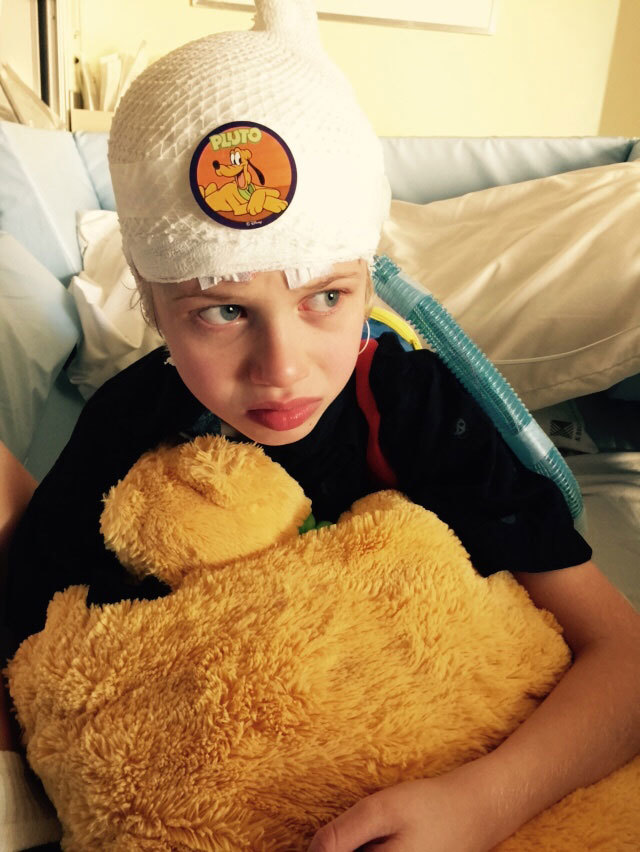
Despite ongoing testing, years went by without answers about Bryson’s exceptionalities. And his parents' anxiety grew.
"There's the financial burden of all the medical equipment and therapy and support workers that’s only partly covered by government and insurance," said McArthur. "Then there's the fear that maybe he won't make it through the night. We know of kids with rare diseases who have died suddenly and unexpectedly."
McArthur said that at the time, he and his wife were "constantly slipping into his dark bedroom to lean in close and make sure we can hear him breathing."
The biggest challenge of all were Bryson's seizure-like episodes, which neurologists still couldn't explain. They were dangerous to Bryson, as well as to family members and other caregivers who try to keep him safe when they’re happening.
Things started to look up in 2013, when Bryson was seven. That’s when McArthur and Williams met renowned geneticist and pediatrician Dr. Ronald Cohn, who would investigate Bryson’s DNA more fully. But it required a genetic exome test that would cost more than $10,000.
In the past, Bryson would be tested for one or two specific genetic diseases at a time. The exome test could test for multiple diseases by examining a broader swath of his DNA and also comparing it to his parents’ DNA.
It took a year for special funding from the Ministry of Health to come through, but they finally got the test.
A couple of weeks before Christmas in 2015, Williams received a life-changing email from Bryson’s genetic counsellor. They finally had a diagnosis. Could they come in to discuss the results?
Williams emailed her back, saying, "I can wait for the actual diagnosis, you don't have to tell me what it is, but please just tell me if it's degenerative, because I need to know that right now." The two women got on the phone and the genetic counsellor assured Williams it wasn't a degenerative condition.
McArthur said it’s impossible to overemphasize the magnitude of this news. "For nearly a decade, we had lived in fear that ... this was one of those diseases that could become fatal when Bryson reached a certain age."
Williams said she’ll never forget that day. "These moments in our lives are so impactful."
IV.
It was Cohn who discovered that the cause of Bryson's struggles was a variation in the GRIN1 gene.
DNA are the blueprints for how our bodies are made. These instructions are coded using tiny particles of four different chemical compounds — guanine, cytosine, adenine and thymine — that scientists refer to using the letters G, C, A and T.
Each person’s DNA contains about 6.4 billion of these letters, which are also known as nucleotides or bases. In Bryson's DNA, a single letter — one out of 6.4 billion — is wrong. This spelling mistake probably happened at conception, and as Bryson's cells began to split, it likely made its way into every cell in his body.
Cohn told McArthur and Williams that neither of them carry the GRIN1 mutation.
Williams said it was particularly meaningful to her that Bryson’s condition had nothing to do with her actions during pregnancy. In the absence of a diagnosis, "it became very hard for me, because in the back of my mind I wondered, did I create this challenge for my child? Did I do something wrong?"
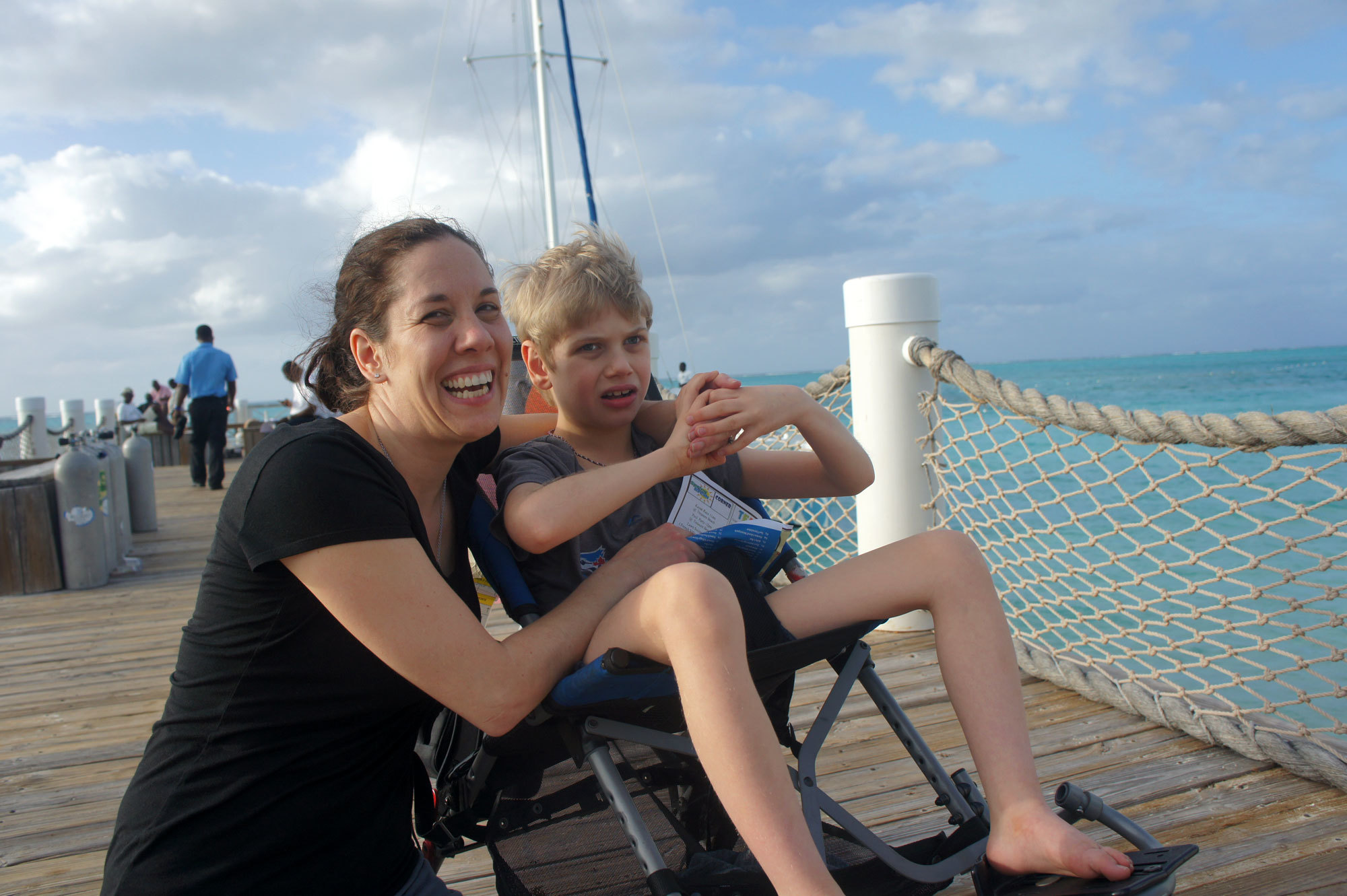
While affirming that GRIN1 wasn't degenerative, Cohn also delivered some bad news: not much is known about GRIN1-related diseases. And there aren’t any cures or treatments.
Five minutes after they left that appointment, Williams and McArthur began Googling GRIN1 on the car ride home. Their search took them to a Facebook community called the Giggling GRIN1 group, named for the happy disposition of the people who have the condition. Here, Williams and McArthur connected for the first time with other parents of children with GRIN1 disorders.
Finding this community was about far more than emotional support. Given the rarity of the disorder, any doctor who has come across GRIN1 probably only knows one or two patients with the disease. "So they had a very limited view, where we can share information with other parents and pass things to our doctors that we learned from other patients," said McArthur.
They come to understand that almost every kid in their patient community has a distinct mutation. With 2,814 letters in the gene, there are thousands of opportunities for spelling errors.
Bryson had a GRIN1 twin, and it was Olivia, a woman in her 20s who can walk and talk a little.
But somehow, out of the tiny group of patients in this Facebook group, there was another patient whose DNA instructions resulted in an A where there should be a G at precisely the same spot as Bryson’s.
In other words, Bryson had a GRIN1 twin, and it was Olivia, a woman in her 20s who can walk and talk a little. McArthur and Williams also learned that Olivia and her parents, Scott and Teresa (who asked to be referred to only by their first names, for privacy reasons), would be travelling to Castle Rock, Colo., a small city 45 kilometres south of Denver, for the first meet-up of GRIN1 patient families.
They booked flights for the whole family, and in June 2016, met other GRIN1 families in real life.
McArthur said being around the other GRIN1 parents at this and subsequent meet-ups was cathartic and uplifting. "We can talk openly about how hard this is. We can both mourn the typical child we didn't get and cherish this special one we have instead."
One day, the families went to a Colorado Rockies baseball game and had a picnic at a park. At one point, Teresa asked if Olivia could take Bryson for a walk. McArthur and Williams said yes, of course she could, and then watched — eyes welling with tears — as Olivia got behind Bryson’s wheelchair and pushed him around the park.

These GRIN1 gatherings included more than just families — they were also attended by physicians and researchers. The second meet-up, in Pittsburgh in 2017, involved Stephen Traynelis, a professor of pharmacology and chemical biology at the Emory University School of Medicine in Atlanta. He studies GRIN1 mutations and is possibly the most knowledgeable person in the world on this subject.
His lab has funding to investigate whether GRIN1 patients have the kind of mutation that makes the gene’s proteins work too hard or not enough, a finding that could have an impact on the course of treatment.
Traynelis also offered the group some advice: Instead of thinking of GRIN1 as an isolated disease, they should team up with parents of kids with other GRIN mutations. Variants in the GRIN2A and GRIN2B genes seem to be even more common than in GRIN1, and potential treatments and cures could overlap among these different genes.
Around this time, the world started to hear a lot more about a new form of gene editing called CRISPR. In 2018, McArthur and Williams learned that their best chance at finding out the right treatment for Bryson’s condition is likely by getting a lab to develop a mouse colony that has the exact same gene variation as Bryson.
Amy Ramsey, a researcher and associate professor at the University of Toronto’s department of pharmacology and toxicology, has had success improving the function in mice who have had their GRIN1 gene restored. Two of her U of T colleagues offered to help get a mouse colony developed to investigate Bryson’s condition. They would come to be called "Bryson mice."
V.
That year, McArthur set aside his journalism and communications career to focus on the hunt for a cure for GRIN disorder. He has since become CEO of CureGRIN, a parent-led foundation supporting research for GRIN disorders.
CureGrin has raised nearly $900,000, most of which came when the foundation won a lucrative grant from the Chan Zuckerberg Initiative, a charitable organization founded by Facebook CEO Mark Zuckerberg and his wife, Priscilla Chan, a pediatrician and teacher.
"I am always amazed about what ... patient families can actually accomplish."
In 2019, McArthur and Williams took a trip to Boston, a hub for biotechnology, to meet with executives of medical research companies. One of the people they met was Omar Kwaja, chief medical officer for Voyager, a Boston-area gene therapy company entering clinical trials for a potential cure for Huntington's disease.
"I am always amazed about what ... patient families can actually accomplish. Because of course it's top of mind every single moment of the day for them," Kwaja said. He said he once met a little girl at a hospital in London, England, who had developed early newborn epilepsy caused by a genetic disorder. "That family started a foundation, and three years later there are 10 compounds in clinical trials for that condition."
This level of involvement in cutting-edge science is not unprecedented for parents of children with rare diseases nowadays, especially given the advancements in gene research. But McArthur acknowledges not every parent is able to devote such resources to the quest for a treatment.
"Laura and I are both white, and well-educated, and financially secure. English is our first language. And it's not right, but I have to recognize that all this gives us a certain privilege to be pushy advocates for our son, in a way that some others cannot," he said.
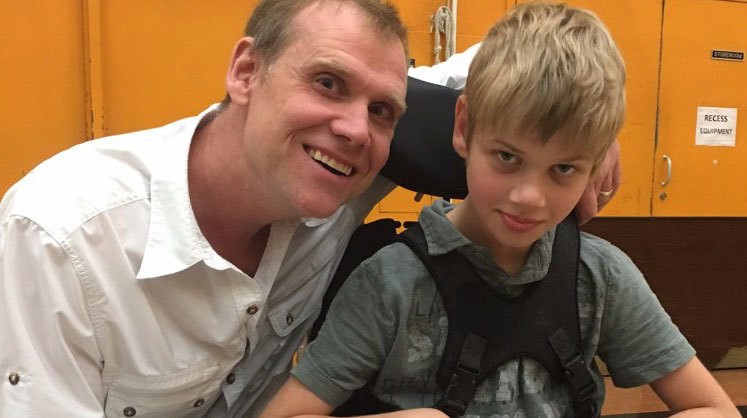
Treatments and cures aside, McArthur said privilege can determine if parents even get a diagnosis for their child.
"I'm willing to bet that the families who have already received GRIN disorder diagnoses for their children are, on average, more affluent than those still searching for a diagnosis," he said. "There's certainly a bias towards more affluent countries. Hundreds of people have been diagnosed with GRIN disorders in North America and Europe, compared with very few in Africa and South America."
He’s also aware of the ethics of searching for a cure.
The term "cure" is loaded. It suggests that there's something wrong, something that needs fixing — that Bryson or any other person with a disability isn’t whole just as they are.
Artist and activist Eli Clare lives with cerebral palsy and is the author of several books, including Brilliant Imperfection, which explores the nature and meaning of the word cure.
He said the word suggests "some bodies and minds are worthy, but other bodies and minds are disposable." To illustrate this, he points to research efforts and prenatal screening for conditions such as Down syndrome, which could eliminate a whole group of people in the future.
"I've been asked, if there was a pill to take that would magically take [my] cerebral palsy away — that would mean that my hands tremored less, that I would speak without a slur, that I would have more balance and co-ordination — would I take the pill?"
Clare, who is now in his 50s, said, "by the time I was 14 and 15, I was answering the question, ‘No, I would not take that pill.’ And people always responded to me as if I had just come in from Mars." In rationalizing his answer, Clare said, "I knew that I had no idea who I would be without this very particular kind of body."
Bryson's health problems present an enormous challenge, but his parents don’t consider him broken.
"Because Bryson's perfect, right? His essence is perfect," said Williams. "But his life is really hard. He has pain and he suffers and it breaks my heart. Every day he has pain that he can't tell us about, or he gets frustrated because he can't go where he wants to go, or do what he wants to do. If we could even help him a little bit on one of those things, that would feel like a success."
If possible, they’d like Bryson to be able to move himself around better, either by walking or propelling his own wheelchair. But most importantly, they’d love for him to be able to make some of his own choices. "And I want him to be free from these seizure-like episodes that cause him so much grief," said McArthur.
Olivia’s dad, Scott, has a similar view of his daughter. "I've come to just love her the way she is and I don't want to change her," he said.
"My hope for all the research is for kids in the future and some of the little kids now, that there will be a cure or some way to at least change some of the symptoms that [they] have."
VI.
Thanks to two Toronto scientists — Dr. Mike Salter, chief of research at The Hospital for Sick Children, and Graham Collingridge, senior investigator at Mount Sinai Hospital, who holds a PhD in neuroscience — the Bryson mice have been successfully created. But work is still ongoing for any potential gene therapies that could help Bryson and others with a similar genetic mutation.
Since first connecting with the family of Olivia, Bryson’s original GRIN twin, McArthur and Williams have learned of seven additional people with the same altered gene expression for a total of nine.
Dr. Tim Benke, a pediatric neurologist in Denver who also holds a PhD in neuroscience, sees multiple GRIN disorder patients and is leading a study to catalogue GRIN symptoms and potential treatments.
"We will have a cure," said Benke. He said that in about 15 years, a treatment will look something like this: "Babies will be identified on the newborn screen, they will be treated within the first month of life before a lot of symptoms develop, the therapy will be with gene therapy and they'll develop minimal to no symptoms, as if it never happened."
But by then, Bryson will be well into adulthood, having missed out on living as though GRIN1 disorder "never happened."
Benke said it's less likely gene therapy will go as far as to make teenagers and adults with GRIN1 fully neurotypical. "Because development has already happened," he said, "we will not be able to see full symptom reversal."
Still, Benke said he’s hopeful "a good percentage" will be able to convey their pain and communicate things they want — and maybe even walk and talk.
There’s no cure for GRIN disorder yet, but McArthur said there has been healing for his family.
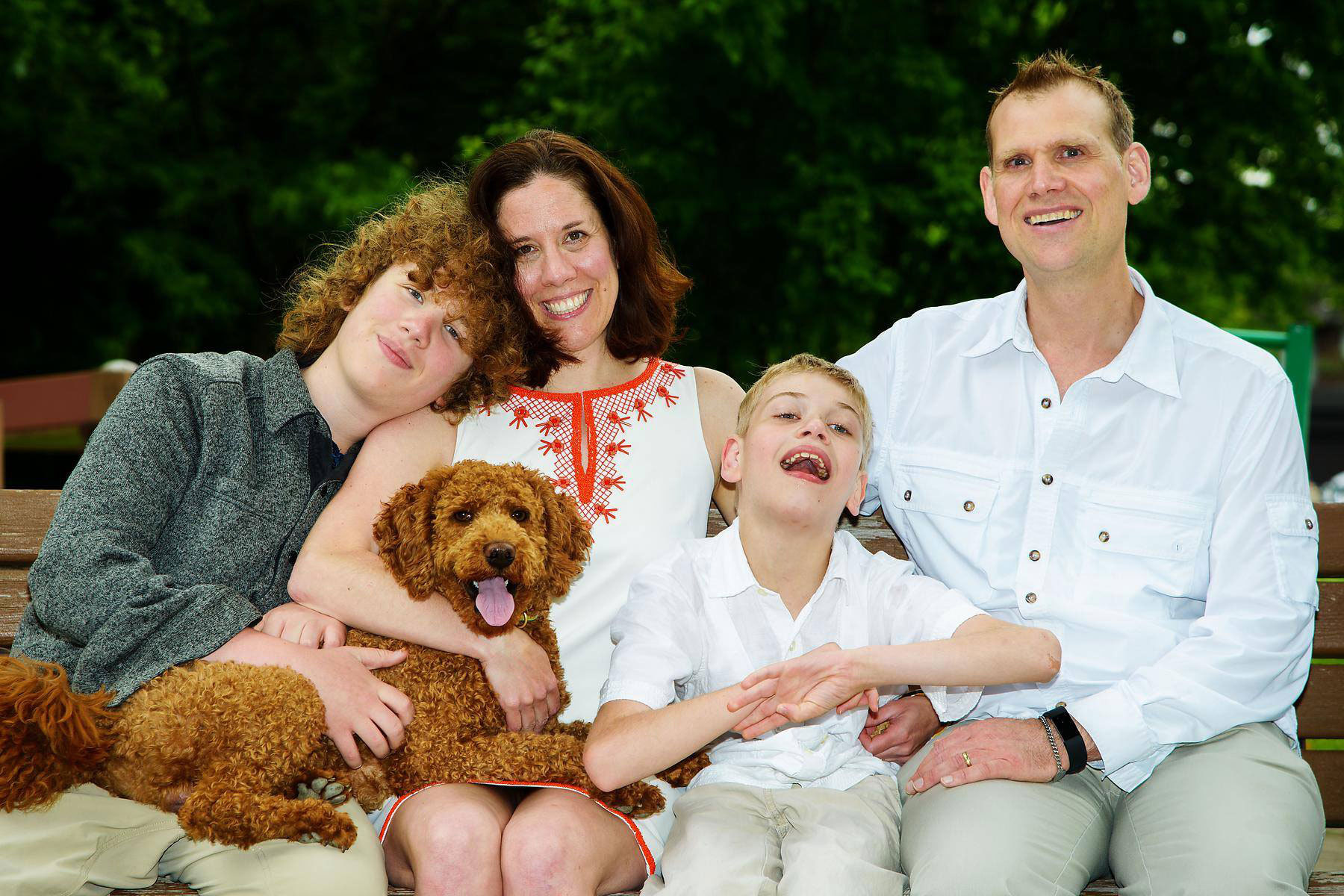
Connor said he’s more optimistic he'll be able to help care for Bryson in the future, because it seems his brother is making developmental strides that would make things easier.
"In these last six months … my whole family has noticed this huge improvement just in the way that he behaves. It’s easier to see what he wants and what he kind of needs. Sometimes, if he’s having a meltdown or a seizure, if you try to explain to him what’s happening, and then he gets what we think he wants, he starts to calm down."
Their quest for answers isn't complete, but Williams said she’s in awe of what they've accomplished.
"Two years ago ... I could not have imagined we’d be where we are today," she said. "We’ve gotten further than I probably thought we would ever get."
